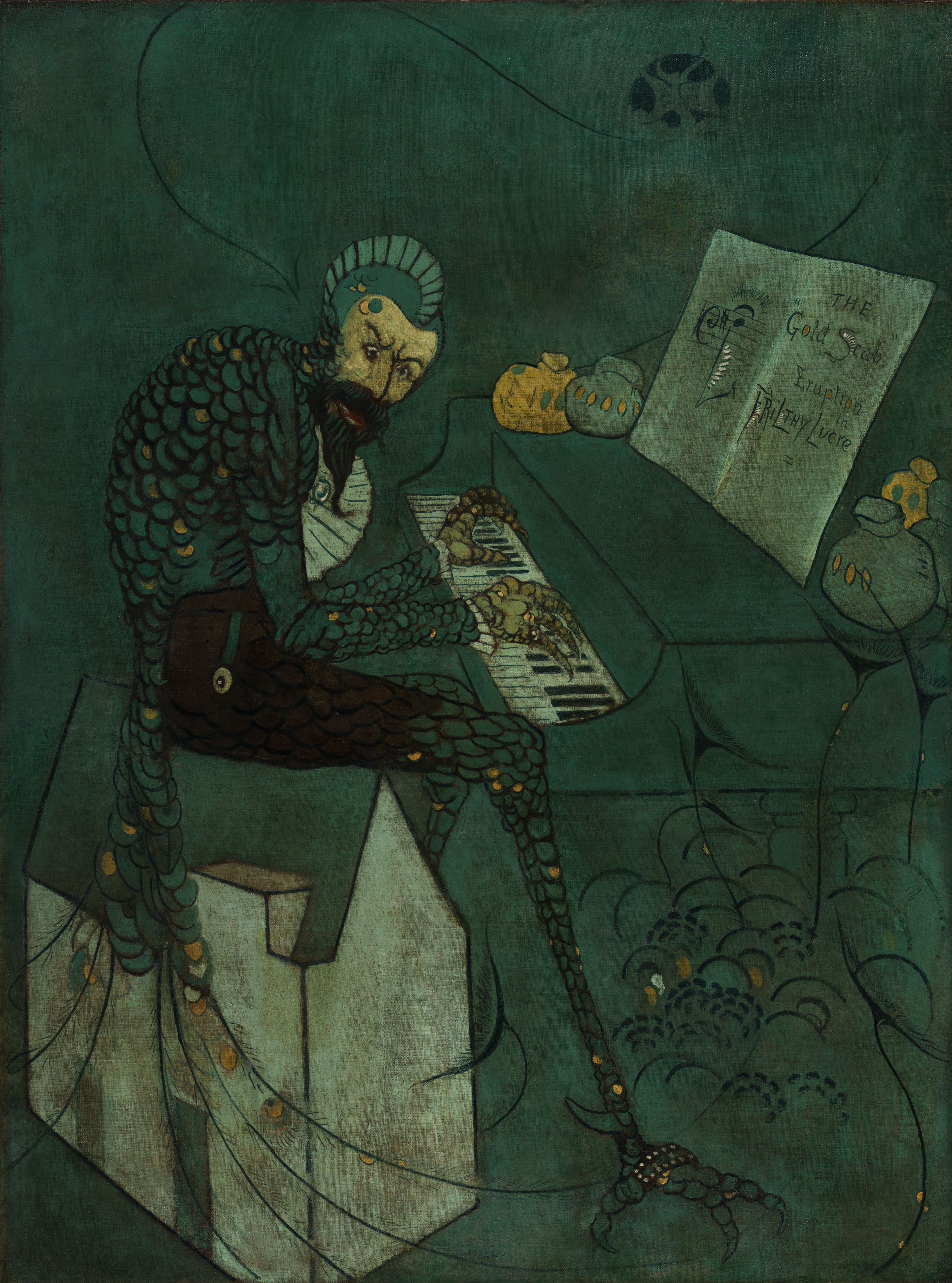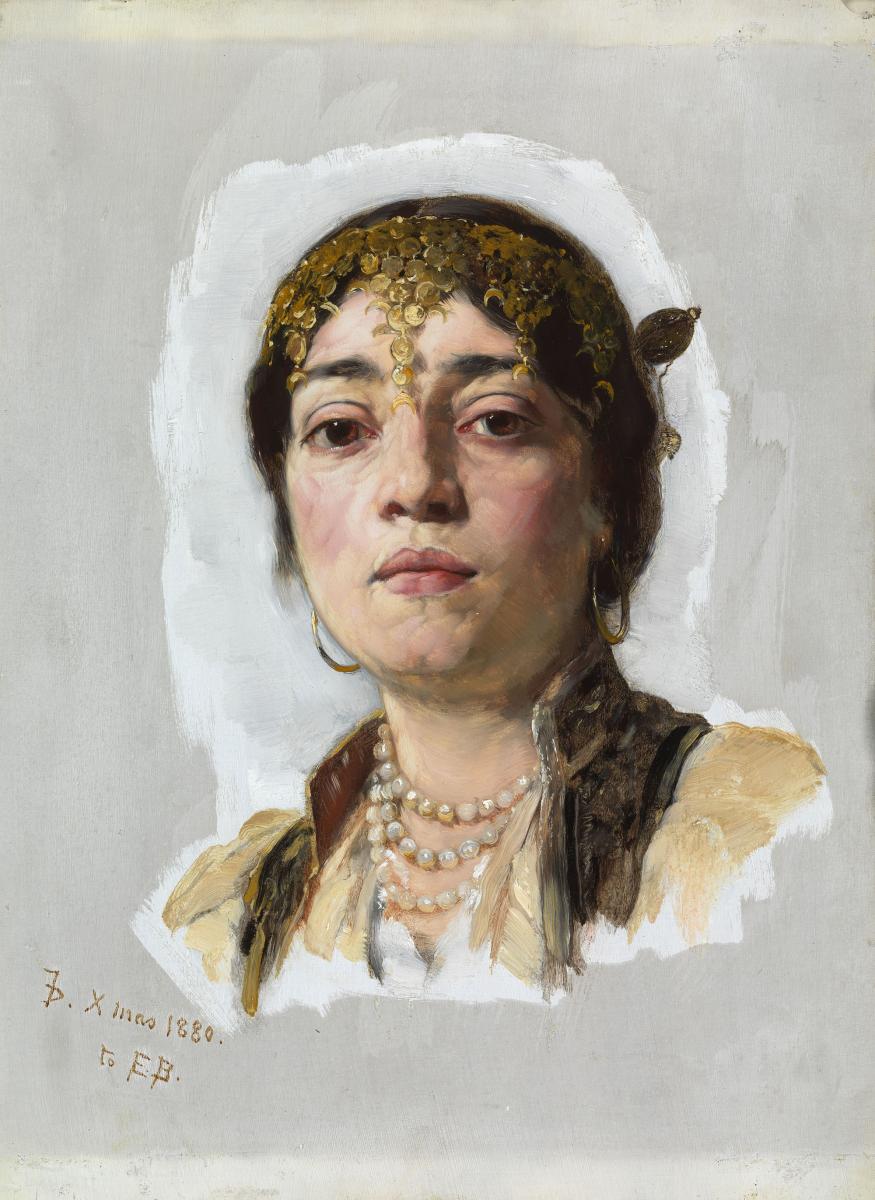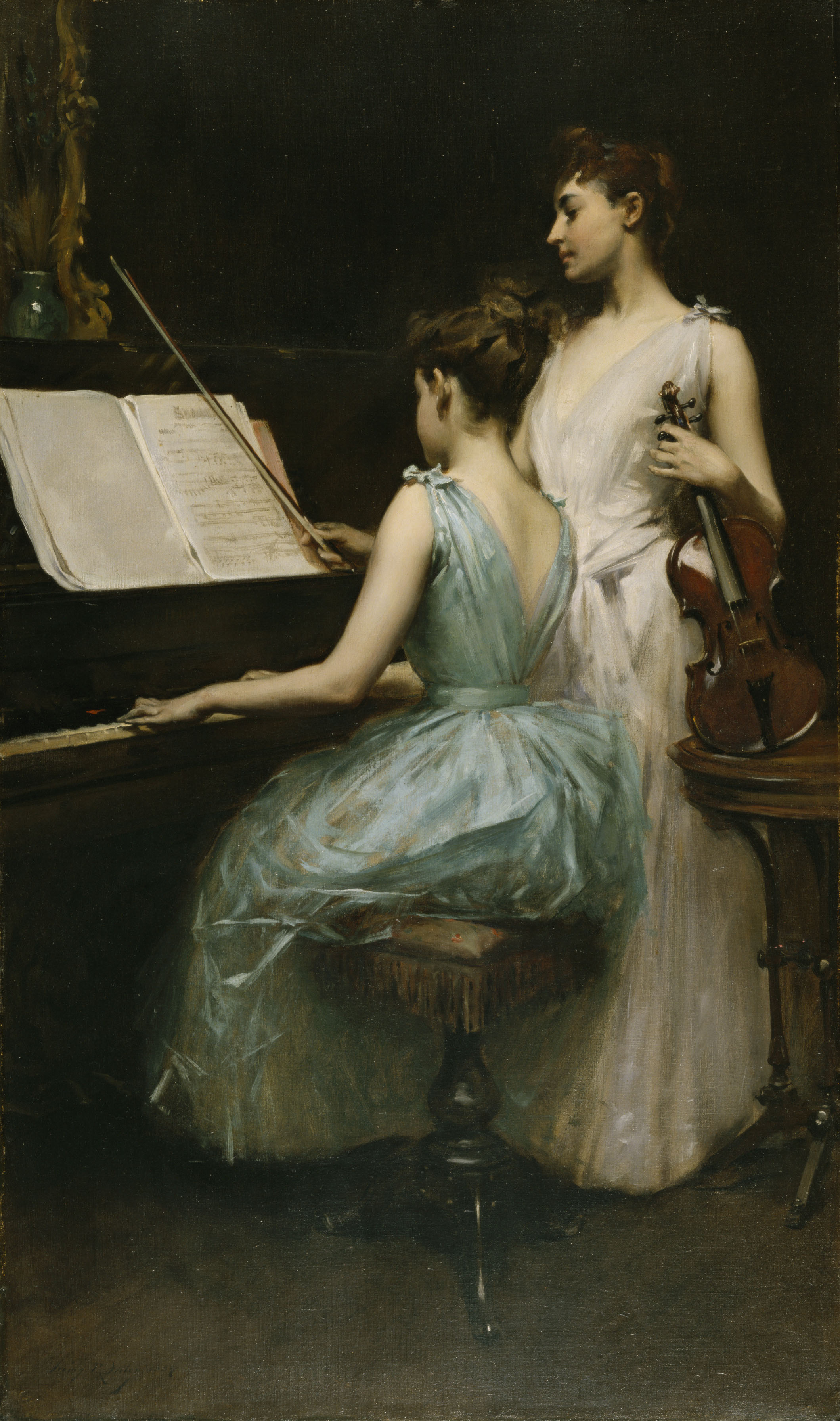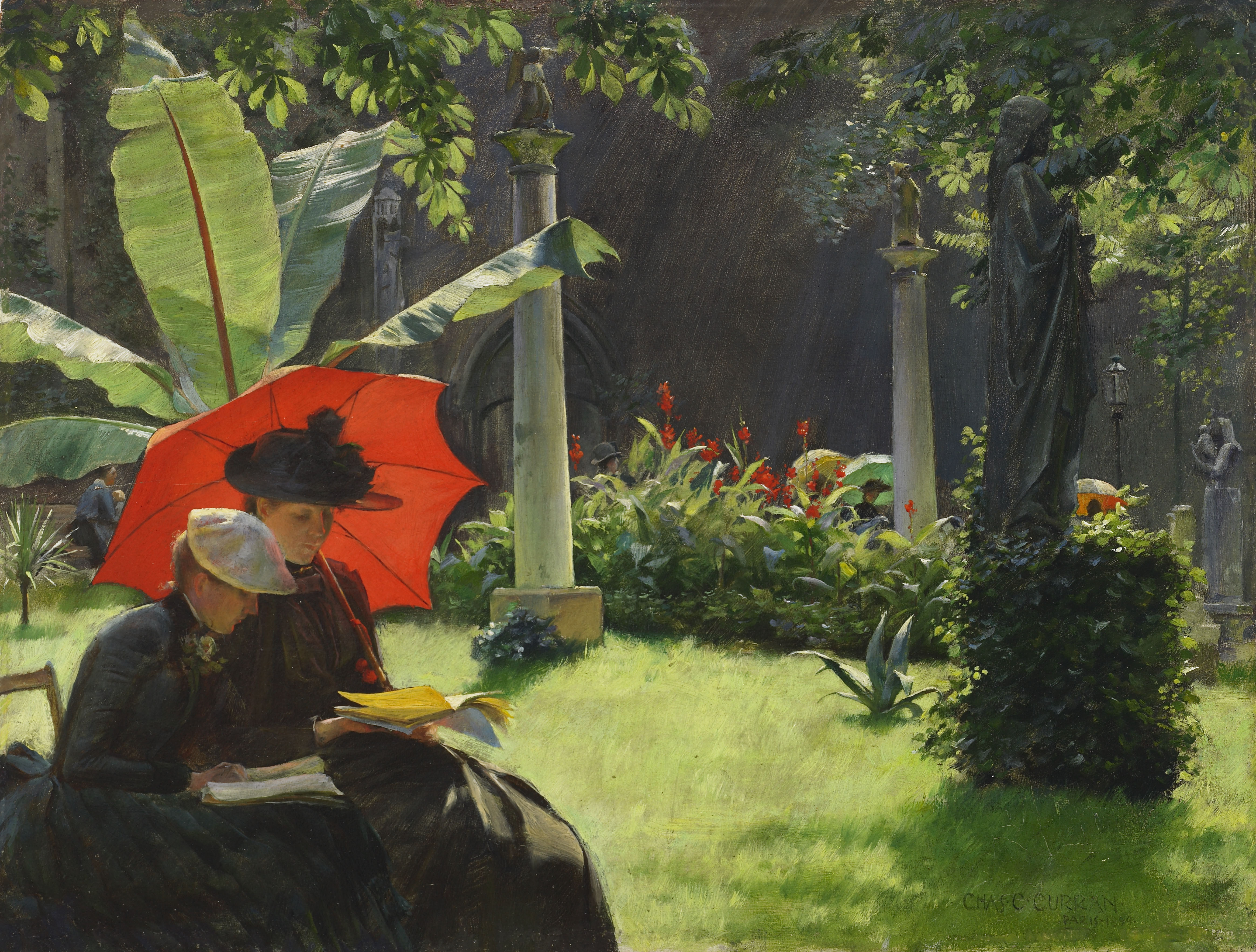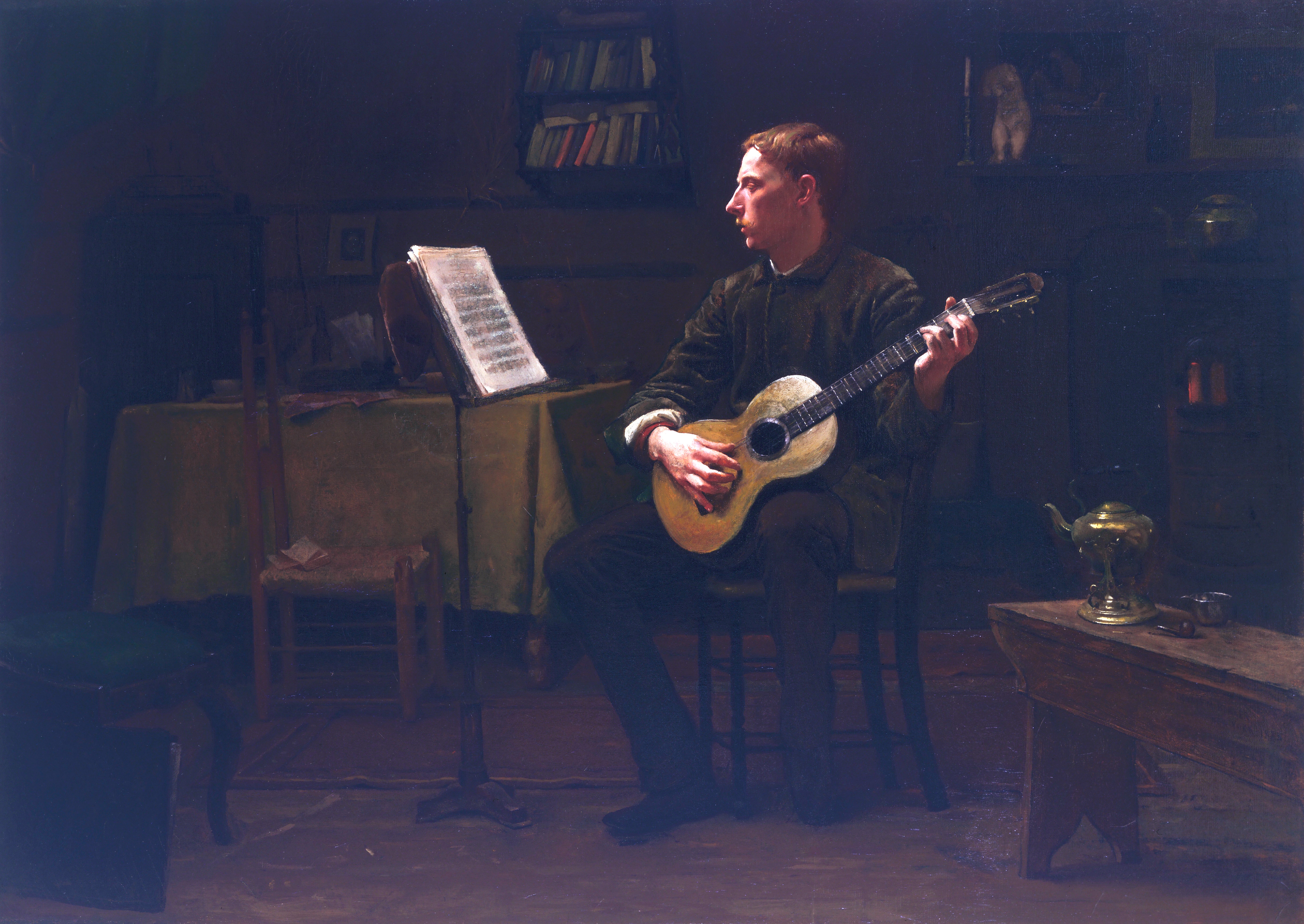Girl and Calf (Led Through Meadows)
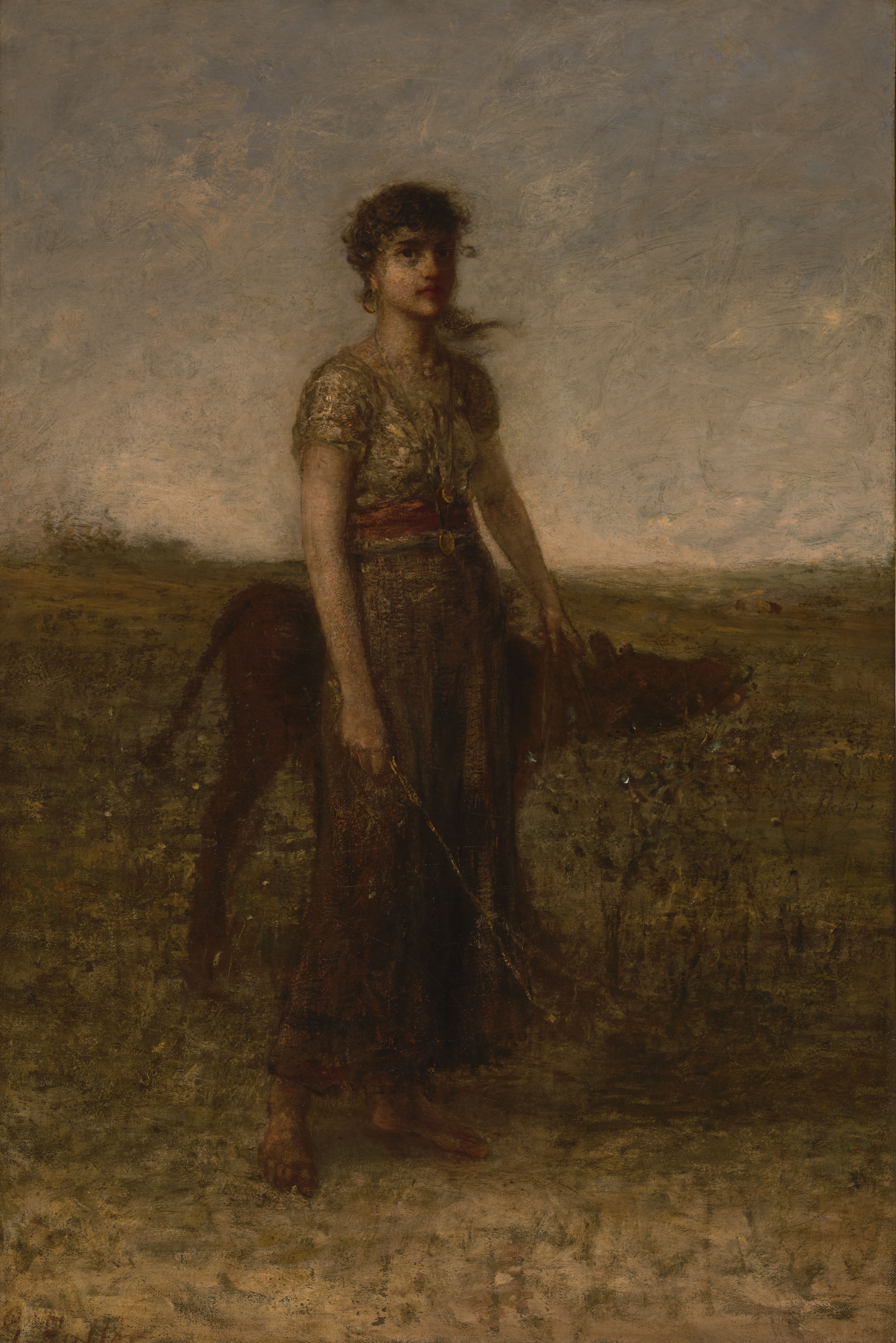
Do you ever dream of spending time in the countryside?
Many of Fuller’s images of African Americans and gypsies feature the same exoticism found in this poetic image of a barefoot girl of ambiguous race, wearing fanciful jewelry and gently leading a calf. The son of a farmer, Fuller farmed for much of his own life, and his representations of rural girls, like those by his European contemporaries, have been interpreted as nostalgic yearnings for a simpler way of life that was being altered by modern technology.
